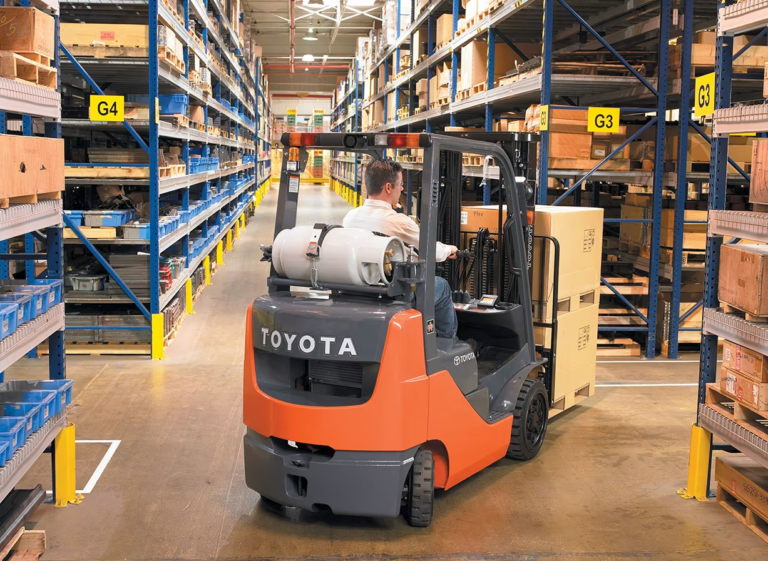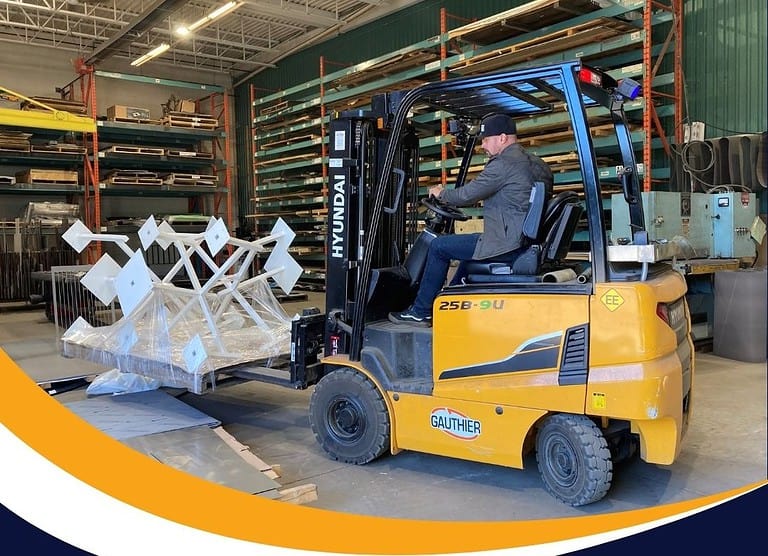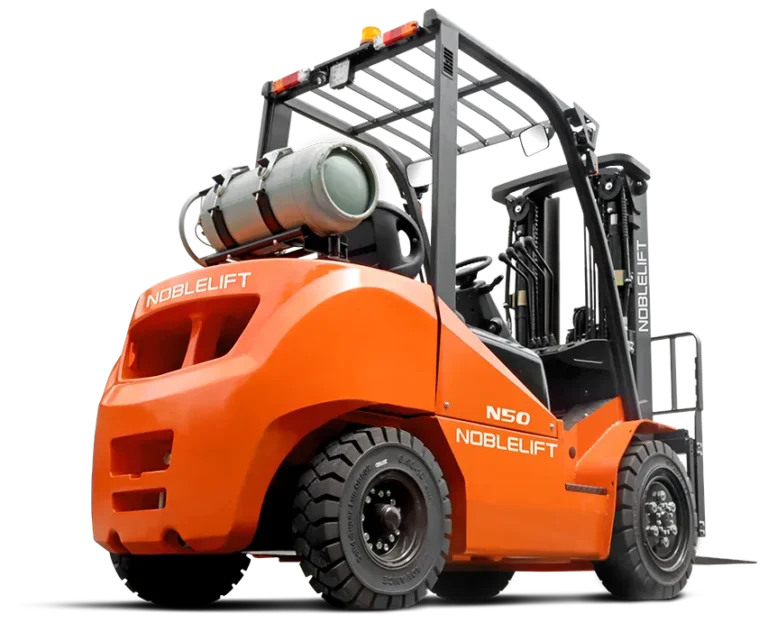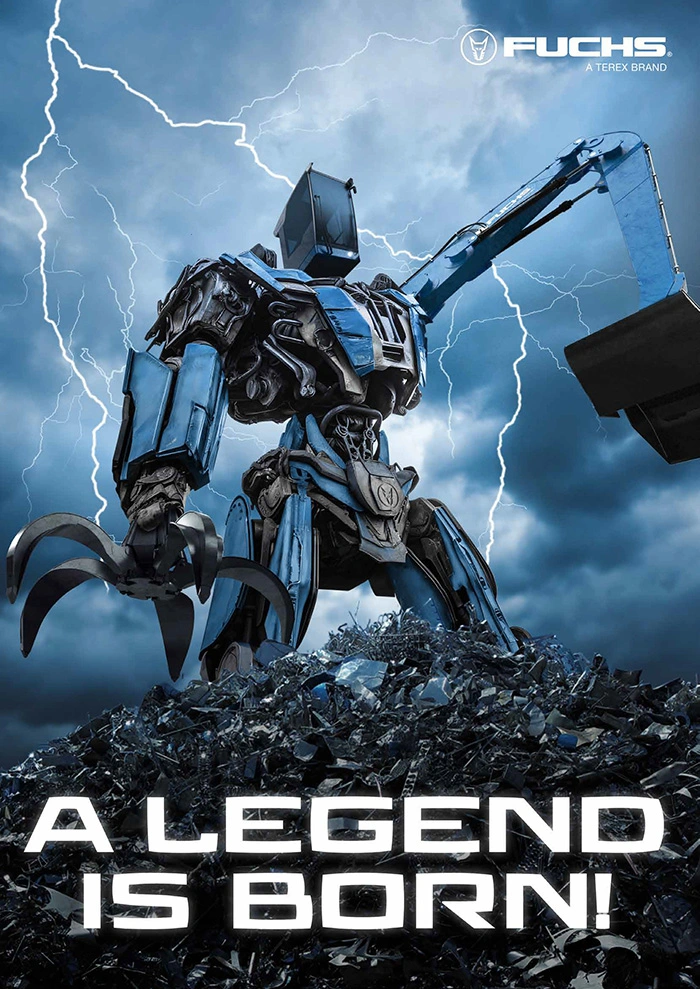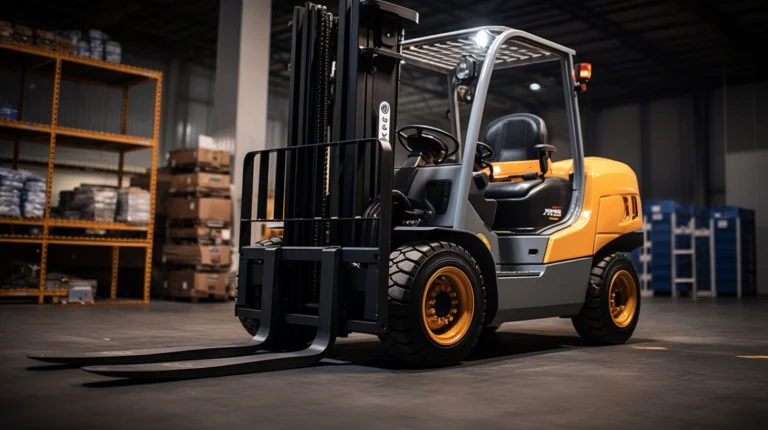
A Comprehensive Guide to Forklift 101: Understanding Its Essential Components is your gateway to mastering the intricate world of forklift operation. Operating a forklift is no small feat – it requires a thorough understanding of the machine’s components, proper training, and a commitment to safety.
With various types of forklifts on the market, each with its unique maintenance needs, it’s crucial for operators to stay abreast of best practices to ensure optimal performance and prevent workplace accidents.
This comprehensive guide delves into the world of forklifts, from their essential components to safe operation techniques, maintenance tips, and licensing requirements. Buckle up, and let’s embark on this journey to forklift mastery!
Key Takeaways
- Forklifts have essential components such as a power source, mast and hydraulic system, forks and attachments, counterweight and stability triangle.
- Safe operation requires pre-operation inspection, travelling/maneuvering with caution & adhering to speed limits. Load handling must meet capacity requirements.
- Obtaining a forklift license requires applicants to be 18+, possess an HS diploma or equivalent & complete an accredited training course. Ongoing training is important for safety & compliance.
Forklift Fundamentals: Key Components and Their Functions
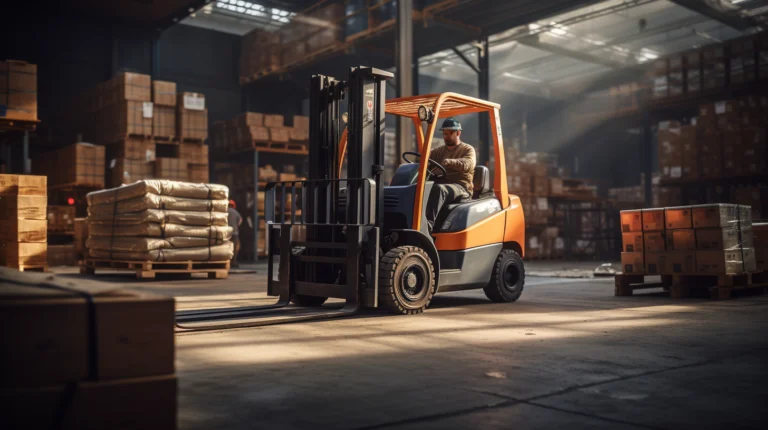
A forklift is an indispensable material handling equipment used in warehouses, construction sites, and various other settings where moving heavy loads is necessary. Understanding the key components and their functions is a prerequisite for operating a forklift safely and efficiently.
This section introduces the power source, mast, forks, and counterweight as integral components of a forklift.
Power Source
Forklifts are powered by either internal combustion engines or battery packs, which can power the hydraulic pump. Electric forklifts are powered by large batteries and designed to work indoors. They’re widely used in warehouses and manufacturing plants.
Electric forklifts often operate in confined spaces, so regular maintenance becomes necessary. Before lifting materials, operators must inspect cables and battery restraints and ensure the hood latch is securely fastened.
On the other hand, internal combustion forklifts run on gasoline, diesel, or propane. The fuel tank in propane-powered forklifts is located outside the vehicle. In contrast, the battery pack in electric forklifts is usually found underneath the driver’s seat or within the lift’s cargo area.
Smooth and safe operation demands vigilant maintenance of the engine or battery, regardless of the power source.
Mast and Hydraulic System
The mast is an essential part of a forklift. It is a vertical assembly that can raise and lower the load. Masts can be operated manually or hydraulically, with hydraulic masts powered by electric or diesel engines. The forklift’s engine or motor drives the hydraulic system, which is responsible for lifting and lowering loads.
Forklift masts come in various designs, such as duplex, triplex, and quad, offering different lift height options. The collapsed height of a two-stage mast is the same as the highest point of the cabin. In comparison with a two-stage mast, the collapsed height of a triplex or quad mast is lower. A grasp of the mast’s capabilities and limitations aids in safe and efficient load handling.
Forks and Attachments
Forks, the prongs that slide under a load to lift it, come in various sizes and configurations to accommodate different lifting needs, such as entirely tapered, tire, tin plate, and spark-resistant forks.
Forklift attachments, such as side shifters, fork positioners, rotators, and clamps, can be added to handle loads of varying sizes and shapes or perform specific tasks like turning bins or lifting personnel.
The load backrest, a horizontal surface attached to the forklift’s carriage, separates the driver from the load and protects the mast and its components from damage caused by bags. With an overhead guard and various forks and attachments, forklift operators can safely lift and transport numerous loads, ensuring versatility and efficiency in material handling tasks.
Counterweight and Stability Triangle
A counterweight is attached to the forklift’s rear to balance the raised load’s weight. This counterbalance is crucial for maintaining stability and safety during operation. The stability triangle, on the other hand, is the area within which the forklift must remain while in motion.
Factors such as unstable or heavy loads, rapid decelerations, taking corners at excessive speeds, and traversing rough terrain can cause a forklift to depart from the stability triangle, increasing the risk of accidents.
A safe forklift operation requires a thorough understanding of the significance of the counterweight and the stability triangle. Operators must always be mindful of these factors to navigate the forklift securely within the stability triangle and minimize the risk of tip-overs or dropped loads.
Safe Operation and Handling Techniques
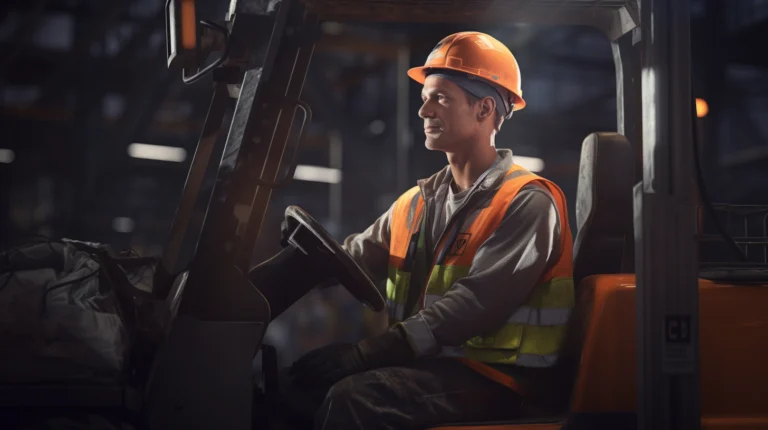
Operating a forklift safely requires knowledge, skill, and adherence to safety procedures. This section will discuss the importance of pre-operation inspection, travelling and maneuvering, and load handling to ensure that forklift operators can perform their tasks efficiently and safely.
A pre-operation inspection is necessary to confirm the good working condition of the forklift and
Pre-Operation Inspection
Before each use, a forklift operator must thoroughly inspect the machine to ensure safety and proper functioning. The inspection of the forklift should include checking all safety components, such as:
- Seat belts
- Tires
- Lights
- Horns
- Brakes
- Backup alarms
- Fluid levels
It is also essential to check the lifting truck’s moving and load-supporting parts, also known as a forklift, including the steering wheel.
Operators should also assess the fuel system, tank, and lines for liquid propane-powered forklifts. For internal combustion engine-powered forklifts, fluid levels, radiator, and air filter should be inspected.
Regular inspection is an essential step in preventing accidents and ensuring smooth operation.
Traveling and Maneuvering
Understanding the differences between driving a forklift and a car is indispensable for secure and proficient navigation. Operators should exercise caution while turning, maintain a clear view of the path of travel and potential hazards, and be aware of pedestrians or other workers in the area.
To ensure safe forklift operation, it’s crucial to adhere to posted speed limits, drive slowly, and be mindful of potential hazards such as sharp turns, blind spots, and intersections with pedestrian traffic. Following these guidelines will greatly reduce the risk of accidents and enhance overall safety on the job site.
Load Handling and Capacity
Safely handling loads with a forklift involves:
- Inspecting the load
- Ensuring its stability and dimensions
- Moving directly in front of the load
- Slightly tilting the forklift mast backward before lifting
- Raising the load sufficiently to clear the floor or rack
Understanding the forklift’s load capacity is crucial, as attempting to lift a load beyond its capacity can result in tip-overs, dropped packs, or damage to the forklift. It’s essential to be aware of the forklift’s load capacity before operating it to ensure safety and efficiency.
Proper lifting techniques for forklift operation include:
- Keeping the load close to the ground
- Tilting the mast slightly backward
- Raising the bag above the lower stack by approximately 10 centimetres for stacking
Following these guidelines and adhering to the forklift’s load capacity, operators can prevent accidents and safely handle loads.
Forklift Maintenance and Servicing
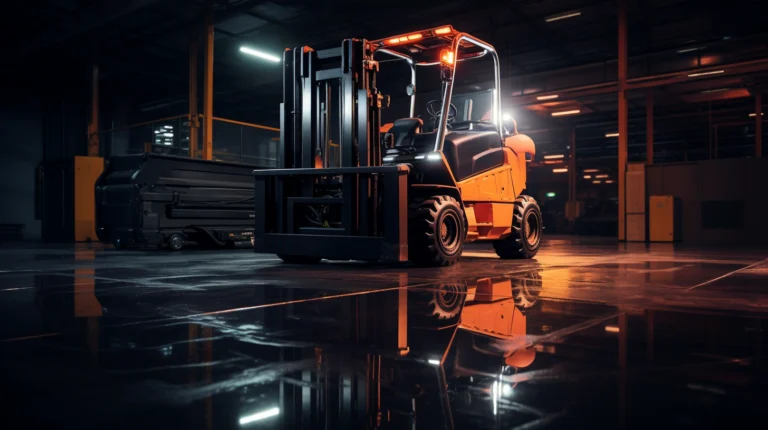
Regular maintenance and servicing of forklifts is indispensable to achieve greater productivity and a rewarding return on investment. This section will discuss the importance of daily and long-term preventative maintenance tasks and the requirements and qualifications for forklift repair technicians.
Daily maintenance tasks should include checking the fluid levels, inspecting the brakes, and testing the battery
Daily and Long-term Preventative Maintenance
Daily and long-term preventative maintenance tasks for forklifts include regular cleaning, testing safety features, and replacing damaged parts. Utilizing checklists and schedules for these tasks ensures all aspects of forklift preventative maintenance are conducted in a safe time frame.
By adhering to these maintenance routines, operators can prolong the operational life of the forklift and prevent accidents.
Requirements and Qualifications for Forklift Repair
For forklift repair, technicians must possess the following qualifications:
- Certification as a Forklift Technician (CFT) to replace parts and repair damaged machines
- High school diploma or GED certificate
- Certification in forklift maintenance and repair
- Experience with electrical systems and hydraulics
- Valid driver’s license
- Completion of a formal training program in heavy equipment mechanics
Using certified professionals for forklift repair ensures that repairs are executed accurately and safely and that the forklift is in satisfactory operational condition. This not only helps maintain the forklift’s performance but also contributes to the overall safety of the workplace.
Types of Forklifts and Their Unique Maintenance Needs
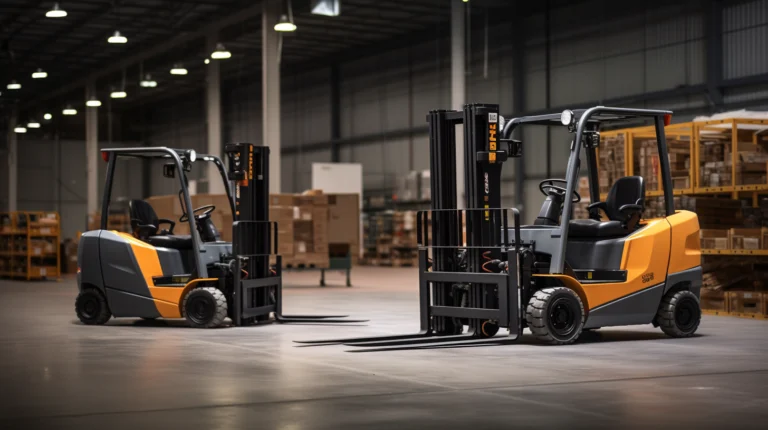
Different forklift types have specific maintenance requirements based on their power source. This section will examine electric, liquid propane, and internal combustion forklifts, discussing their unique maintenance needs to ensure optimal performance and safety.
Electric forklifts require regular battery maintenance, including checking the water levels and cleaning the terminals.
Electric Forklifts
Battery-powered electric forklifts are famous for their quiet operation and lower emissions than internal combustion forklifts. These machines often operate in confined spaces like warehouses and manufacturing plants, so regular battery care and inspection become paramount for electric forklift maintenance.
By adhering to proper maintenance routines, operators can ensure the safety and efficiency of electric forklifts.
Liquid Propane Forklifts
Liquid propane forklifts (LPG Forklifts), powered by propane gas, are known for their robustness and strength, making them suitable for outdoor applications.
Maintenance guidelines for these forklifts include:
- Fuel system checks
- Inspecting the propane tank for leaks or damage
- Ensuring hoses and belts are firmly in place
- Verifying that the relief valve is oriented upwards
Additionally, it is essential to follow safety precautions when performing maintenance on forklifts.
Proper maintenance of liquid propane forklifts contributes to their longevity and safe operation.
Internal Combustion Forklifts

Internal combustion forklifts, also known as powered industrial trucks, are powered by diesel, gasoline, or propane. They are renowned for their durability and power, making them ideal for outdoor applications.
Maintenance recommendations for these forklifts include regular fluid checks and appropriate engine care. By following these guidelines, operators can ensure the proper functioning and safety of internal combustion forklifts.
Obtaining a Forklift License and Proper Training
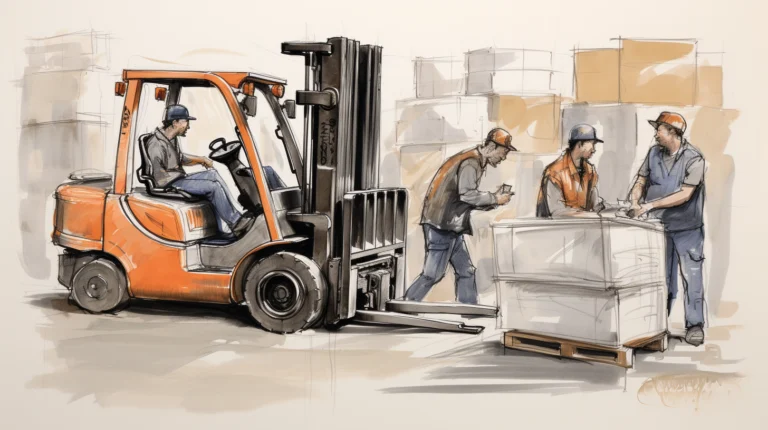
Obtaining a forklift license is crucial to operate safely and comply with regulations.
This section will discuss obtaining a forklift license and the importance of ongoing training and certification renewal to ensure safe operation.
Forklift License Requirements
To obtain a forklift license, operators must complete an accredited training course and pass a practical and theoretical test. The minimum age requirement for obtaining a forklift license is 18 years, and a high school diploma or equivalent is required.
Adherence to the Occupational Safety and Health Administration (OSHA) standards is also necessary for fulfilling a forklift training course.
Importance of Ongoing Training and Certification Renewal
Ensuring safe forklift operation calls for continuous training and periodic renewal of forklift certifications. The benefits of ongoing training include:
- Increased safety
- Improved job prospects
- Enhanced job mobility
- Conformance with regulations
- Professional growth
By staying up-to-date with training and certification, operators can guarantee their competence and ability to operate forklifts safely and efficiently.
Conclusion
In conclusion, understanding the essential components and functions of a forklift, practicing safe operation and handling techniques, and adhering to proper maintenance and servicing guidelines are all crucial to ensuring the safety and efficiency of forklift operation. With the knowledge provided in this comprehensive guide, forklift operators can confidently navigate the world of forklifts and contribute to a safer, more productive workplace.
Frequently Asked Questions
What are the essential components of a forklift?
Power source, mast, hydraulic system, forks, attachments, counterweight, and stability triangle.
Why is the mast an essential part of a forklift?
The mast is a vertical assembly that raises and lowers the load, aiding in load handling.
What safety checks should be performed before operating a forklift?
Inspect components like seat belts, tires,brakes, fluid levels, and ensure proper functioning of safety features.
How often should forklift certifications be renewed?
Forklift certifications should be renewed periodically, with ongoing training for safe operation.
Why is regular maintenance crucial for forklifts?
Maintenance prolongs operational life, prevents accidents, and ensures the safety and efficiency of the equipment.
Sources
https://en.wikipedia.org/wiki/Forklift https://www.osha.gov/etools/powered-industrial-trucks/types-fundamentals/power-sources/internal-combustion https://www.toyotaforklift.com/resource-library/blog/purchasing-decisions/selecting-the-right-forklift-mast https://www.bigrentz.com/blog/forklift-mast https://www.grainger.com/category/material-handling/transporting/lift-trucks/forklifts-forklift-attachments https://www.raymondcorp.com/forklifts/counterbalanced-trucks https://www.hyster.com/en-us/north-america/support-resources/safety/20-tips-for-safe-handling/ https://www.msscusa.org/cft/ https://propane.com/propane-products/forklifts/ https://www.oshaeducationcenter.com/forklift-certification/ https://www.osha.gov/

